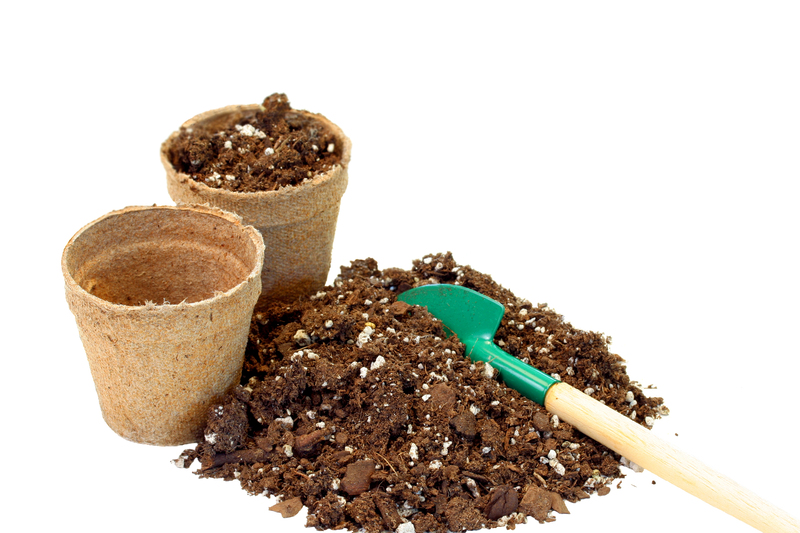Planting Playful Elements in a Safe Garden for Kids
Posted on 31/05/2025
Planting Playful Elements in a Safe Garden for Kids: A Comprehensive Guide
A garden designed for children is more than just a patch of green--it's an ever-evolving adventure, a classroom, and a playground blended together. Planting playful elements in a safe garden for kids can cultivate their curiosity, creativity, and connection with nature. This article explores innovative ways to design a child-friendly garden filled with engaging, safe, and educational features.

Why Create a Safe and Playful Garden for Children?
Children learn best through play, and a garden is the perfect space to foster imagination, learning, and physical activity. A thoughtfully designed garden can be a source of:
- Physical activity: Climbing, running, digging, and exploring support healthy development.
- Cognitive development: Observing plants, insects, and seasons fosters curiosity and learning.
- Emotional well-being: Nature play is proven to reduce stress and boost happiness.
- Family bonding: Joint gardening activities create lasting memories.
Principles of a Safe Garden for Kids
Planting playful elements in a safe garden for kids begins with safety at the core. Use these guiding principles:
- Choose non-toxic plants: Avoid species harmful if touched or ingested.
- Ensure sturdy structures: Any equipment or feature should be securely installed and checked regularly.
- Use soft surfaces: Grass, mulch, or rubber mats under climbing features cushion falls.
- Eliminate sharp edges: Sand down wooden items and pick rounded stones.
- Supervise and educate: Teach children to identify safe plants and spaces.
Top Non-Toxic Plants for Kids' Gardens
Some attractive, safe-for-children plants include:
- Sunflowers (Helianthus annuus)
- Snapdragons (Antirrhinum majus)
- Nasturtiums (Tropaeolum majus) - also edible!
- Marigolds (Tagetes)
- Scented geraniums (Pelargonium)
- English daisies (Bellis perennis)
Creative Playful Features to Add in a Children's Garden
Planting playful elements in a safe garden for kids should engage all the senses and inspire play. Here are some fun ideas to consider:
1. Living Playhouses
A living teepee or tunnel made of fast-growing vines such as runner beans, sweet peas, or morning glories creates a magical, natural hideout. Construct a frame from bamboo poles, tie at the top, and plant seeds around the base. Within weeks, children have a green fort to play in and snack from!
2. Sensory Gardens
Engage sight, touch, smell, and sound:
- Scented paths with lavender, mint, chamomile, or lemon balm.
- Textures like lamb's ear and soft moss underfoot.
- Chimes and rustling grasses to delight the ears.
- Brightly colored flowers and butterfly-attracting plants for visual interest.
3. Edible Gardens for Healthy Snacking
Allow children to pick and eat from their garden, teaching them about where food comes from:
- Cherry tomatoes (grown in large containers or beds)
- Strawberry patches--always a hit!
- Pea and bean teepees for climbing and harvesting
- Blueberry and raspberry bushes--easy and rewarding for little hands
- Herb gardens: chives, basil, parsley, and mint
4. Mud Kitchens and Play Areas
Every child loves to dig and mix! Build a mud kitchen from reclaimed wood or old pallets. Include:
- A sturdy table and old pots, pans, and spoons
- Containers for water and natural "ingredients" (leaves, petals, mud)
5. Water Play Zones
Water features are attractive but require constant safety supervision. Opt for:
- Shallow splash fountains with non-slip surfaces
- Pump-operated streams in pebbled channels
- Sprinklers or misting tunnels for hot days
6. Wildlife-Friendly Spaces
Children learn empathy and fascination from observing animals. Invite nature in by:
- Planting butterfly and bee-friendly blooms: zinnias, lavender, cosmos
- Constructing bug hotels from bamboo tubes and logs
- Adding bird feeders and small birdbaths (cleaned regularly)
7. Climbing, Balancing, and Exploring Structures
Children need challenges! Consider:
- Low climbing frames or balance beams made from untreated timber
- Stepping stone trails through flower beds
- Mini obstacle courses built with logs, ropes, and stumps
- Tunnels made from willow or living hedges
8. Secret Hiding Spots and Quiet Spaces
Create cozy nooks with tall grasses, sunflowers, or dense bushes where children can retreat with a book or daydream. A low hammock or shady bench offers restful spots for reflection.
Maximizing Safety in a Kid's Garden
Essential Safety Checklist
- Fence your garden if possible, to keep children in and dangers out.
- Lock away any tools, fertilizers, or chemicals.
- Regularly check play equipment for wear and tear.
- Avoid hard, sharp, or breakable ornaments.
- Choose UV-stable, non-toxic, and weatherproof materials.
- Ensure clear sightlines so you can supervise children easily.
- Introduce sun-protective features: shade sails, tree canopies, or arbors.
What to Avoid in a Children's Garden
- Toxic plants (consult your local extension office for a full list relevant to your area)
- Pesticides and chemical fertilizers--opt for organic gardening practices
- Deep water features, large ponds, or choking hazards like small gravel
- Breakable glass ornaments or sharp decorative items
- Dangerous tools left within reach
Making It Educational: Learning Through Garden Play
Planting playful elements in a safe garden for kids isn't just about fun--it's a springboard for lifelong learning. Consider these educational opportunities:
- Math and science skills: Counting seeds, measuring plant growth, identifying insects.
- Fine motor development: Digging, planting, watering, and weeding.
- Responsibility: Assign children their own planting plots or containers.
- Art and imagination: Nature-inspired crafts, painting stones, or creating fairy gardens.
Install a weatherproof chalkboard for doodling or documenting observations. Create a nature journal or photographic diary to track changes throughout the seasons.
Involving Kids in Garden Planning and Care
Collaborative Planning
Invite children to help plan the space. Ask them:
- What flowers, fruits, or colors do they love?
- Would they like a mini vegetable patch or a butterfly zone?
- What kind of play areas excite them most--climbing, digging, splashing?
Child-Size Tools and Roles
Provide safe, child-sized tools for digging, watering, and harvesting. Assign simple daily or weekly jobs. Younger children might water plants or collect leaves, while older kids can weed or harvest ripe produce.
Design Ideas for Different Garden Sizes
Small Yard or Balcony
- Vertical gardens with hanging pots or wall-mounted planters
- Mini sandboxes in large containers
- Herb spirals or compact vegetable raised beds
- Fairy or dinosaur miniature gardens in containers
- Foldable play tents or tunnels for instant adventure
Spacious Lawns
- Dedicated sections: one for play, one for fruitful crops
- Maze-like paths of tall grasses or clipped hedges to explore
- Fruit tree groves for climbing, shade, and snacking
- Sunflower towers or woven willow living tunnels
- Natural "creek" beds with smooth stones for play

Benefits Beyond the Backyard
By planting playful elements in a safe garden for kids, you nurture:
- Lifelong environmental stewardship
- Early understanding of nutrition
- Coping skills and resilience from hands-on, confidence-building activities
- Imagination, cooperation, and a sense of accomplishment
Conclusion: Growing Beyond Play
Creating a haven that blends playfulness and safety when planting playful elements in a garden for kids means more than keeping children busy--it's about cultivating a love of nature, a thirst for discovery, and a sanctuary for adventure. With thoughtful design and regular care, your child-friendly garden will become a treasured space for the whole family.
Start with their safety, sprinkle on their creativity, and watch your children--and your garden--bloom.



